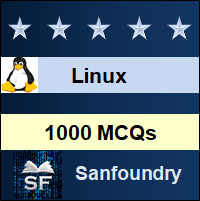
Our 1000+ Linux MCQs focuses on both Linux Administration & Linux Systems Programming areas. These MCQs are useful for both experienced professionals as well as freshers. These Linux MCQ have been broken down into various sections of Linux kernel viz. process management, memory management, file management, interprocess communication, signal handling, and so on.
Highlights
– 1000+ Linux MCQs (Multiple Choice Questions & Answers) with explanations
– Lots of MCQs with Linux Systems Programming code snippet and its output
– Lots of MCQs on Linux Basic Environment, Shell Programming and Administration
– Linux programming code is compiled and tested on x86-32 bit systems
– Lots of MCQs with GDB Debugging, Tricky and Buggy Code Snippets & Examples
Who should Practice these Linux MCQs?
– Anyone wishing to sharpen their skills on Linux Environment & Administration
– Anyone wishing to sharpen their skills on Linux Programming
– Anyone preparing for interviews (campus interview, walk-in interview and company interviews)
– Anyone preparing for entrance examinations and other competitive examinations
– All – Experienced, Fresher and Student
Here’s the list of Questions & Answers on Linux Administration, Developer Environment, Debugging and Programming
Wish you the best in your endeavor to learn and master Linux!
